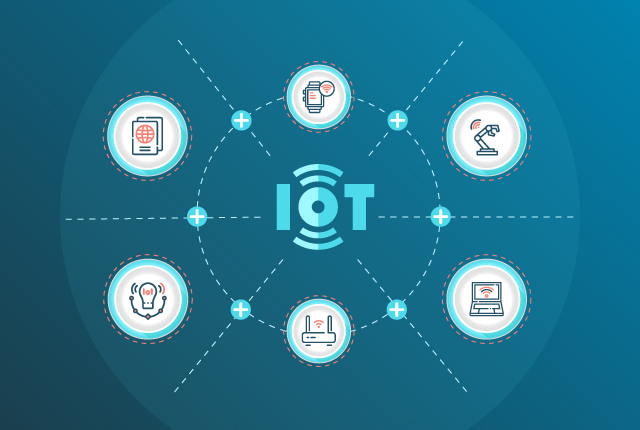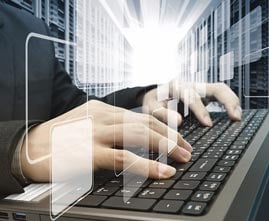
Table of Contents
- What is IoT testing?
- Why is IoT testing important?
- Key challenges in IoT testing and how to overcome them
- Industries that rely on IoT testing
- Best tools for IoT testing in 2025
- What types of tests are performed?
- IoT testing frameworks: What you need to know?
- The IoT testing process: Step-by-step guide
- IoT system test protocol
- Best practices for effective IoT software testing
- Examples of IoT software testing
- Latest trends in IoT testing
- How can QASource help with IoT testing services?
- Conclusion
The Internet of Things (IoT) is connecting billions of devices worldwide. In 2025, the IoT market is expected to reach $1.5 trillion, with over 75 billion connected devices. This rapid growth makes IoT testing essential. It ensures devices work correctly, communicate smoothly, and stay secure.
IoT devices are used in healthcare, smart cities, and industrial automation. Any failure can lead to security risks, data loss, or system crashes. Testing helps prevent these issues by verifying performance, security, and reliability.
However, devices use different protocols, networks must handle massive data loads, and security threats are constant. To solve these problems, companies are using AI automation, edge computing, and advanced security testing. As IoT expands, thorough testing will keep systems safe, reliable, and efficient.
What Is IoT Testing?
IoT testing executes QA tests that validate an IoT device's performance, functionality, and security. Because every IoT device transmits data from one object to another over the Internet, verifying that your IoT devices can transmit sensitive information wirelessly before market launch is crucial.
That’s why many successful IoT businesses rely on IoT automation, penetration, and performance testing tools so that any defect is detected before it reaches consumers.
These days, IoT devices come in all shapes and forms, from smart TVs and smart appliances to commercial security systems and traffic monitoring technologies. In short, if your device is “smart,” then it’s an IoT device that requires testing. Since every IoT device communicates data wirelessly over the Internet, it's imperative to confirm the secure transmission of sensitive information before the product is introduced to the market.
Purpose of IoT Testing: IoT testing ensures devices work properly, communicate effectively, and stay secure. It helps prevent failures, security breaches, and performance issues.
Key Goals:
- Functionality: Confirms devices work as expected.
- Connectivity: Ensures smooth data exchange.
- Security: Detects and prevents cyber threats.
- Performance: Tests speed, scalability, and reliability.
- User Experience: Improves stability and efficiency.
Why is IoT Testing Important?
IoT testing is paramount for several reasons:
- Ensuring Device Reliability: IoT devices play integral roles in daily life and business operations. Testing is crucial to ensure these devices function reliably under diverse conditions, preventing malfunctions or breakdowns that could disrupt critical processes.
- Data Security: As IoT devices often transmit sensitive data, ensuring robust security is imperative. Testing helps identify vulnerabilities and weaknesses in a device's security features, safeguarding against potential breaches that could compromise user data or privacy.
- Optimizing Performance: Testing allows evaluating an IoT device's performance under different scenarios. This includes assessing response times, data transmission efficiency, and overall functionality. Optimizing performance ensures a seamless user experience and prevents slow response times or system failures.
- Early Defect Detection: Identifying and rectifying defects early in the development cycle is cost-effective and prevents issues from reaching end-users. IoT testing, particularly automation and penetration testing, aids in detecting and addressing defects before devices are deployed to the market.
- Compliance and Standards: Many industries have specific regulations and standards regarding the use and deployment of IoT devices. Testing ensures that devices adhere to these standards, helping businesses meet regulatory requirements and avoid legal complications.
- User Experience: A positive user experience is crucial for the success of any IoT product. Thorough testing, including usability and compatibility testing, ensures that the device meets user expectations, operates seamlessly, and integrates effectively with other systems.
- Risk Mitigation: Testing helps mitigate the risks associated with IoT devices, including the potential for system failures, security breaches, or data loss. By proactively identifying and addressing these risks, you can enhance the reliability and trustworthiness of your IoT products.
Key Challenges in IoT Testing and How to Overcome Them
Testing IoT applications poses unique challenges due to the complexity and diversity of the IoT ecosystem. Here are the ways to address them effectively:
-
Device Diversity
Challenge: The wide variety of IoT devices with different hardware, operating systems, and communication protocols can make it challenging to ensure compatibility and interoperability.
Solution:
- Use simulation tools to emulate different types of devices.
- Prioritize testing on the most widely used and critical devices.
- Implement device profiling to understand and categorize device capabilities.
-
Network Variability
Challenge: IoT devices often operate in diverse and unpredictable network conditions, including low bandwidth, high latency, and intermittent connectivity.
Solution:
- Conduct testing under various network conditions, including low bandwidth and high latency.
- Implement edge computing to reduce the dependence on central servers.
- Test devices' ability to handle intermittent connectivity and recover gracefully.
-
Security Concerns
Challenge: Security is a significant concern in IoT devices due to the potential for unauthorized access, data breaches, and compromised connected devices.
Solution:
- Perform thorough security testing, including penetration testing and vulnerability assessments.
- Implement secure communication protocols (e.g., TLS/SSL) and robust authentication mechanisms.
- Regularly update device firmware and software to patch security vulnerabilities.
-
Data Volume and Quality
Challenge: IoT applications generate and process large volumes of data. Ensuring the quality, integrity, and real-time processing of this data can be challenging.
Solution:
- Conduct performance testing to evaluate the system's ability to handle data at scale.
- Implement data validation mechanisms to ensure data integrity.
- Use data analytics tools to monitor and analyze data in real time.
-
Scalability
Challenge: As the number of connected devices increases, the scalability of the entire IoT system becomes crucial for maintaining performance.
Solution:
- Perform scalability testing to identify bottlenecks and optimize the system architecture.
- Implement load-balancing mechanisms to distribute traffic evenly.
- Utilize cloud services that can dynamically scale based on demand.
-
Lack of Standards
Challenge: The absence of universal standards for IoT devices and communication protocols can lead to interoperability issues.
Solution:
- Choose standardized communication protocols (e.g., MQTT, CoAP) where possible.
- Participate in industry alliances and organizations that work towards IoT standardization.
- Implement middleware or gateways to translate between different protocols.
-
Lifecycle Management
Challenge: Managing the lifecycle of IoT devices, including updates, patches, and end-of-life considerations, can be complex.
Solution:
- Implement over-the-air (OTA) update mechanisms for device firmware and software.
- Plan for device obsolescence and ensure a clear end-of-life strategy.
- Regularly update security policies and procedures.
-
Privacy Concerns
Challenge: IoT devices often collect sensitive personal data, raising privacy concerns among users.
Solution:
- Ensure compliance with privacy regulations and standards.
- Implement strong data anonymization and encryption practices.
- Provide transparent privacy policies and options for users to control their data.
-
Testing Edge Computing
Challenge: The rise of edge computing introduces new challenges in testing distributed processing and communication between edge devices and central servers.
Solution:
- Develop testing scenarios that involve edge computing components.
- Test the synchronization and communication between edge and central systems.
- Use edge computing simulation tools to mimic real-world edge device behavior.
-
Regulatory Compliance
Challenge: Meeting regulatory requirements and standards in different regions can be complex and time-consuming.
Solution:
- Stay informed about relevant regulations and standards in the regions where the IoT solution will be deployed.
- Include regulatory compliance testing as part of the overall testing strategy.
- Collaborate with the legal and compliance teams to ensure alignment with regional requirements.
Industries That Rely on IoT Testing
While the concept of an IoT device may be straightforward, its application continuously grows in complexity and expands across industries.
- Manufacturing: The manufacturing industry internally invests in IoT technology to enhance systems, save costs for internal production, and advance consumer experiences through the produced materials. IoT devices allow manufacturers to optimize processes, monitor equipment, manage the movement of goods, and execute preventative maintenance.
- Transportation: From freight monitoring to maintaining the traffic flow of public transportation, efficiency is the name of the game. IoT technology enables the transportation industry to increase productivity and monitor the logistics and routing of vehicles. IoT cameras, sensors, and digital data recorders can monitor operating or driving behavior for insurance-related reasons and how quickly vehicles suffer from on-the-job wear and tear.
- Healthcare: It should come as no surprise that the healthcare industry is the most committed to financially investing in IoT technology. Medical machines provide images to patients’ caregivers, medicine dispensation, monitoring and real-time tracking of medical equipment, and advancements in implants and prosthetics. The possibilities of healthcare-related IoT devices seem endless.
- Energy and Utilities: Continuous monitoring is essential within the energy and utilities industry, from oil and gas fields to consumer electricity meters. IoT solutions such as smart grid meters allow energy companies to gather this data remotely and accurately. IoT technology provides more efficient practices for monitoring pipes, valves, and pressure gauges. It performs preventative maintenance on key equipment parts for enhanced safety.
- AI and Computing
- Edge Computing: IoT devices generate vast amounts of data and process it in the cloud, which can lead to latency and bandwidth issues. Edge computing involves processing data closer to where it's generated, reducing response times, and saving bandwidth.
- AI and Machine Learning: Integrating AI and machine learning into IoT systems enables devices to remember and make intelligent decisions based on data patterns. This can lead to more efficient and predictive maintenance and improved automation.
- Telecom
- 5G Integration: The rollout of 5G networks promises faster and more reliable connectivity, crucial for real-time communication between IoT devices. It can support many devices in a smaller area than 4G.
Best Tools for IoT Testing in 2025
Which IoT automation testing tools are best for testing the software of your IoT device? Here’s the answer to your question. We have compiled our recommendations of the best tools in today’s market for testing your IoT product's software and hardware.
Best IoT Testing Tools for Software Testing
- Wireshark
- Tcpdump
- Shodan
- SOASTA CloudTest
Best IoT Testing Tools for Hardware Testing
- JTAG Dongle
- Digital Storage Oscilloscope
- Software-Defined Radio
What Types of Tests are Performed?
Like any software product, IoT devices require extensive QA testing. With the right IoT testing tools in place, your team can streamline your IoT testing by adding these testing practices to your development cycle.
-
Security Testing
IoT penetration testing tools can verify that IoT devices are free from any threats, vulnerabilities, or risks. Your security testing process should have your IoT automation testing tools search for any possible weaknesses or loopholes within the IoT product. Is transmitted data always protected and encrypted? How strongly does password protection prevent malicious attacks?
-
Connectivity Testing
Connectivity is what makes IoT devices so appealing. IoT testing tools should review the strength of communication between the device and the user and between two or more IoT devices. How well does the device connect to the network? Once connected, can the device successfully transmit the requested and relevant data? How does the device perform when offline?
-
Performance Testing
IoT performance testing tools are designed to ensure the expected performance of the IoT device under normal circumstances. Performance testing for IoT applications aims to eliminate any performance blocks or glitches that prevent the IoT device from running optimally. IoT performance testing tools can gather information on the device’s response time and product features. Does the IoT software maintain speed and stability during normal conditions? What is the IoT device’s load capacity before it malfunctions or crashes?
-
Functional Testing
With the assistance of IoT testing tools, your team should validate the IoT software system against functional requirements and specifications. From API testing your IoT device to standard regression testing, your functional test cases should test each function within the IoT device by providing appropriate input and verifying the output against your functional requirements. Whether performed manually or with IoT automation testing tools, functional testing checks user interfaces, APIs, databases, and client/server communication.
-
Compatibility Testing
Because of the complexity attached to IoT technology, compatibility testing must be included in every QA process. Execute test cases through your IoT automation testing tools that examine the compatibility of your IoT device across any user experience, from hardware and operating systems to software and network speeds. Is the IoT device compatible with all operating systems and browser types? Does the IoT device perform as expected across generations of devices with different browser versions?
-
Real-world Testing
Real-world testing is vital in ensuring IoT devices' robustness before market launch. This testing evaluates the device's performance and functionality in actual usage scenarios, moving beyond controlled environments. It involves assessing the device's adaptability in diverse real-world settings and simulating common daily usage scenarios to evaluate its performance under practical conditions. Testing also extends to various network conditions, checking the device's functionality across different speeds and strengths.
IoT Testing Frameworks: What You Need to Know?
Several frameworks are available that provide a structured approach to IoT testing. One such framework is the IoT Testing Pyramid, which consists of three layers:
-
Device Layer
It focuses on testing the individual IoT devices themselves. This includes functionality testing, performance testing, and compatibility testing. Ensuring the device functions as intended and can handle various scenarios and inputs is crucial.
-
Communication Layer
It involves testing the communication protocols between IoT devices. This includes testing the interoperability of different devices, checking if they can communicate seamlessly, and validating the data exchange between them. It also involves testing the security of the communication channels to prevent unauthorized access and data breaches.
-
Cloud Layer
It focuses on testing the backend infrastructure that supports the IoT ecosystem. This includes testing the cloud servers and data storage systems. It is essential to ensure that the cloud infrastructure can handle the increasing volume of data generated by IoT devices and provide a seamless experience for users.
The IoT Testing Process: Step-by-Step Guide
IoT testing involves multiple stages to ensure comprehensive coverage and thorough validation of the devices. The testing process typically includes the following steps:
- Step 1: Requirement Analysis: The first step is to analyze the requirements of the IoT device and the expected functionality. This helps define the scope of testing and identify the critical areas that need validation.
- Step 2: Test Planning: Once the requirements are analyzed, a test plan is created. This includes defining the test objectives, scenarios, cases, and data required for testing. It is essential to have a well-defined test plan to ensure systematic and structured testing.
- Step 3: Test Execution: In this stage, the actual testing is performed based on the test plan. The IoT devices are tested for functionality, performance, security, and compatibility. Various testing techniques and tools validate the devices against the defined criteria.
- Step 4: Defect Tracking: During the test execution, any defects or issues identified are logged and tracked. This helps ensure that all the identified issues are addressed and resolved before the final release of the IoT device.
- Step 5: Test Reporting: A comprehensive test report is prepared once the testing is complete. This report includes the test results, identified issues, and recommendations for improvement. It summarizes the testing process and helps make informed decisions about the readiness of the IoT device for deployment.
IoT System Test Protocol
To ensure the effectiveness of IoT device testing, it is crucial to have a well-defined system test protocol in place. The system test protocol outlines the specific tests that need to be performed and the criteria for evaluating the performance of the IoT system. The protocol typically includes the following components:
-
Connectivity Testing
It focuses on ensuring that all IoT ecosystem devices can communicate effectively. This involves testing the devices' ability to connect to the network, exchange data, and interact seamlessly. The testing process may include checking wireless connections (e.g., Wi-Fi, Bluetooth, Zigbee), wired connections, and protocols used for communication (e.g., MQTT, CoAP). It ensures that devices can establish and maintain connections, as the IoT architecture requires.
-
Data Integrity Testing
It is crucial to validate that the information exchanged between IoT devices remains accurate, consistent, and unaltered during transmission. This involves checking for errors, data corruption, or loss during data transfer. Testing scenarios may include varying data volumes, stressing the network, and assessing how devices handle different data types. Ensuring data integrity is vital for the reliability of IoT applications, especially in scenarios where data accuracy is critical, such as healthcare, industrial monitoring, and smart cities.
-
Security Protocol Testing
Focuses on evaluating the robustness of the security measures implemented in the IoT system. This includes testing encryption, authentication, access controls, and other security mechanisms to identify vulnerabilities and weaknesses. Security protocol testing helps protect sensitive data from unauthorized access, manipulation, or interception. It also involves assessing the system's resistance to common security threats, such as hacking attempts, data breaches, and denial-of-service attacks.
Best Practices for Effective IoT Software Testing
To ensure effective IoT software testing, it is important to follow best practices proven to yield reliable and accurate results. Here are some best practices to consider when testing your IoT devices:
- Test for Real-world Scenarios: IoT devices are designed to operate in real-world environments, so testing them under realistic conditions is crucial. This includes testing the devices for different network conditions, varying data loads, and environmental factors they may encounter in the field.
- Implement Continuous Testing: It involves integrating testing throughout development. This ensures that any issues or defects are identified and resolved early on, reducing the overall time and effort required for testing.
- Leverage Automation: Automation can significantly improve the efficiency and effectiveness of IoT testing. Organizations can save time and resources by automating repetitive tasks like regression testing and data generation while ensuring consistent and reliable testing results.
- Prioritize Security Testing: It should be a top priority, given the sensitive nature of the data transmitted by IoT devices. It is essential to thoroughly test the security mechanisms implemented in the devices and the communication channels to identify and address any vulnerabilities.
- Collaborate with Stakeholders: Effective communication and collaboration with stakeholders, including developers, testers, and end-users, are crucial for successful IoT testing. Organizations can ensure that the testing efforts align with the business requirements and user expectations by involving all relevant parties throughout the testing process.
- Leverage AI for Smarter Testing: AI is transforming IoT testing with advanced capabilities like real-time analytics, intelligent issue detection, and prompt validation for voice-controlled or AI-enabled devices. It enables predictive testing for performance and ensures seamless interaction across interconnected systems.
Examples of IoT Software Testing
To illustrate the importance of IoT software testing, let's consider a few examples:
- Smart Home Security System: It consists of various IoT devices, such as cameras, motion sensors, and door locks. To ensure the security and reliability of the system, it is essential to test the devices for vulnerabilities, such as weak authentication mechanisms or insecure communication channels.
- Industrial Monitoring System: It uses IoT devices to collect data from sensors installed in manufacturing plants. To ensure the accuracy and performance of the system, it is crucial to test the devices for data collection and transmission, as well as the reliability of the cloud infrastructure that stores and processes the data.
- Smart Healthcare Devices: IoT devices are increasingly used in the healthcare industry for remote patient monitoring and tracking of vital signs. To ensure the safety and effectiveness of these devices, they need to be thoroughly tested for accuracy, reliability, and security.
Organizations can identify potential issues or vulnerabilities by testing these IoT software examples and ensuring their devices meet the required standards.
Latest Trends in IoT Testing
The Internet of Things (IoT) landscape is rapidly evolving, necessitating advancements in testing methodologies to ensure device reliability, security, and performance. Here are the latest trends shaping IoT testing:
- AI & Machine Learning: Automates test case creation and identifies system failures early. It reduces manual effort and improves testing accuracy.
- Edge Computing: Processes data closer to devices for real-time testing. It helps minimize latency and improves system responsiveness.
- Security Testing: Strengthens IoT security with penetration tests and compliance checks. It ensures protection against cyber threats and data breaches.
- Digital Twins: Creates virtual models of devices for testing without physical hardware. It helps simulate real-world conditions and monitor performance.
- Blockchain Security: Uses decentralized networks to secure IoT data transactions. It prevents unauthorized access and enhances device trust.
- 5G Integration: Tests IoT devices for high-speed connectivity and low latency. It ensures seamless performance in next-gen networks.
Position changed: How Can QASource Help with IoT Testing Services?
QASource, with its expertise in software testing, offers comprehensive IoT testing services.
- Skills and Expertise: Our skilled QA professionals leverage advanced testing methodologies and tools to ensure the IoT system’s seamless functionality, security, and performance.
- Tailored Solutions: With a focus on early testing, scalability, and continuous testing, QASource provides tailored solutions to meet the unique testing needs of IoT applications across various industries.
Partner with QASource for reliable and efficient IoT testing services, safeguarding the success of your interconnected systems.
Conclusion
IoT testing is indispensable for ensuring the reliability and security of interconnected devices. Organizations can build robust IoT systems that meet user expectations by addressing challenges, implementing best practices, and utilizing effective testing tools. Further, organizations can instill confidence in their IoT devices and provide users with a seamless and secure experience.



